The Elevating Role of Insights with Technology Innovation
This edition features Sarah Ashley. Sarah delivers insights on markets and consumers for Google's EMEA operations, with a focus on Google Ads. Previously she served in research, brand and insight roles for Truth Consulting, Kantar and Landar Associates.
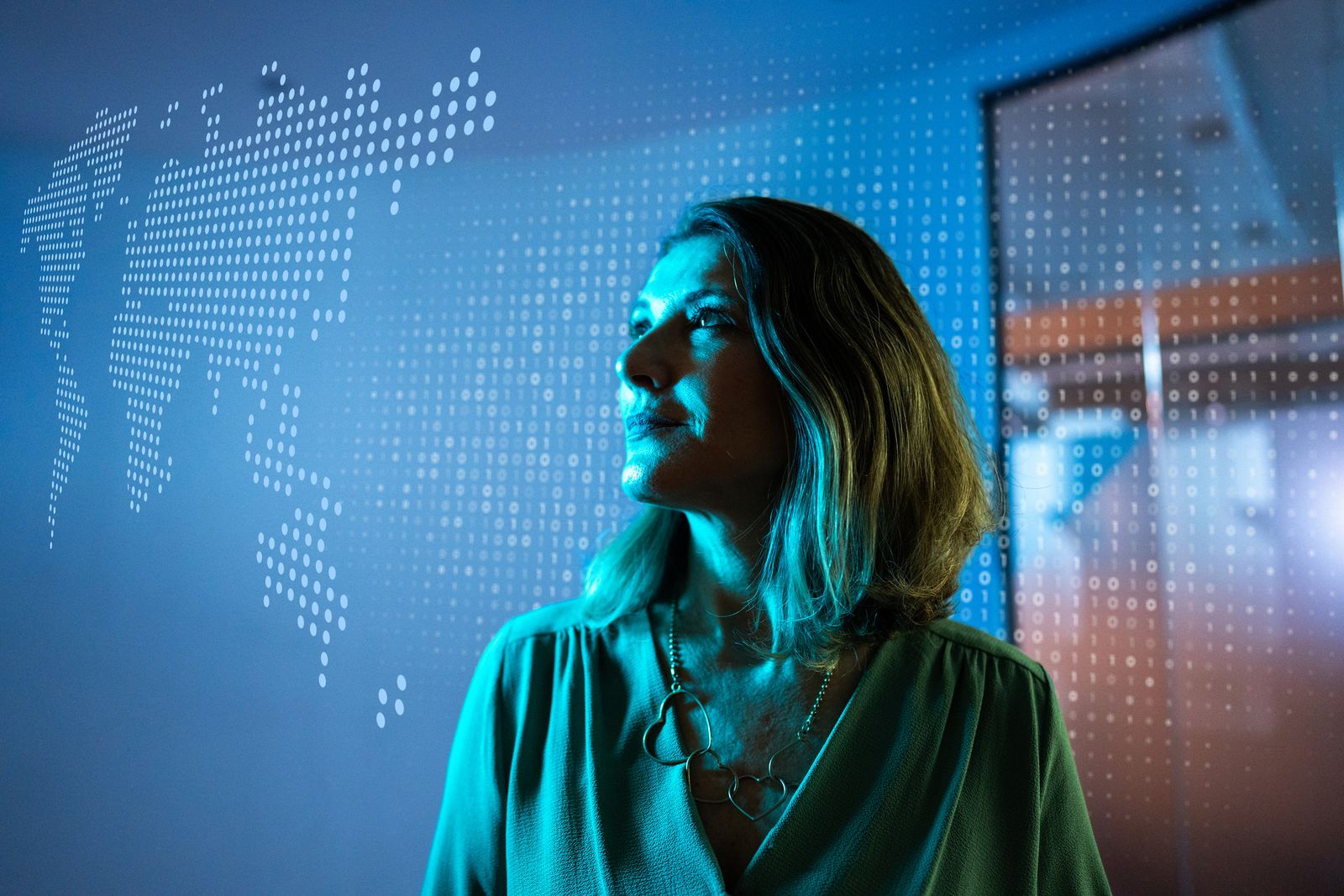
Article series
Insight250
- The importance of business sense in research
- The role of humour in effective leadership
- The importance of ethics
- The importance of disruption in innovation and leadership
- The importance of Disruption in Innovation and Leadership Part 2
- The importance of Diversity & Inclusion
- The impact of colour
- Communicating insight with impact
- Insights on leadership, culture and polling
- The evolution of electric vehicles
- 2022 Top tips (part 1)
- 2022 Top tips (part 2)
- Maximising the potential of data
- The importance of flexible working
- Winners
- The importance of advanced analytics
- Judges for the 2022 Insight250 Awards announced
- The evolution from social listening to digital intelligence
- The Judges' Perspective
- The judge's perspective - part 2
- Insight Climate Collective
- Insights technology
- Understanding employee ownership
- Global insight perspectives
- Top Tips from our Leaders and Innovators
- The Evolution of Insights in the Food & Beverage Market
- The Evolution of Insights in CPG
- Neural Mechanisms Behind Consumer Decision-Making
- Celebrating and Elevating the Insights Industry
- The State of the Insights Industry
- Opportunities, challenges and threats that AI presents
- 2024 Insight250 Winners Announcement
- Connecting Brands and Consumers Through Insights
- The Importance of Human Insight and Attention
- The Elevating Role of Insights with Technology Innovation
- Haleon’s Insight Expert on Consumer Healthcare
- Insight from the Insight250: How AI is Impacting Qualitative Research
- How AI Tech is Doing the ‘Heavy Lifting’ for Insights
- Reviewing the top tips for 2025
- Google's Sarah Ashley on AI and revolutionising insights - Insights from the Insight250
- Beyond BI: The Future of Decision Intelligence for Insight Professionals
- The Advancement & Impact of Insights - An Insight250 Winners Series perspective with David Smith
- International Jury for the 2025 Insight250 Awards Announced
- Newly elected President, Anne-Sophie, on Revolutionizing the Impact of Insights
- Haleon's Litthya Baez on Enhancing Healthcare with Insights - Insight250 Winners Series
- Understanding the Insights of Consumer Decisions
- Moving Beyond Dashboards to Deliver Decisions with AI
- How AI is Transforming Insights
- How AI is Transforming Insights
- Five Years of Insight250: Elevating the Insight Industry
The Insight250 spotlights and celebrates 250 of the world’s premier leaders and innovators in market research, consumer insights, and data-driven marketing. The awards have created renewed excitement across the industry whilst strengthening the connectivity of the market research community. Winners of the 2024 Insight250 were announced this past September - you can see the full list of Winners at Insight250.com.
With so many exceptional professionals named to the Insight250, it seems fitting to tap into their expertise and unique perspectives across various topics. This regular series does just that: inquiring about the expert perspectives of many of these individuals in a series of short topical features.
This edition features Sarah Ashley. Sarah delivers insights on markets and consumers for Google's EMEA operations, with a focus on Google Ads. Previously she served in research, brand and insight roles for Truth Consulting, Kantar and Landar Associates.
I sat down with Sarah to discuss a spectrum of topics from the evolving role of insights in technology innovation to tips for transitioning into a strategic insight role. It’s a fascinating discussion that takes us into one of the most innovative companies on the planet.
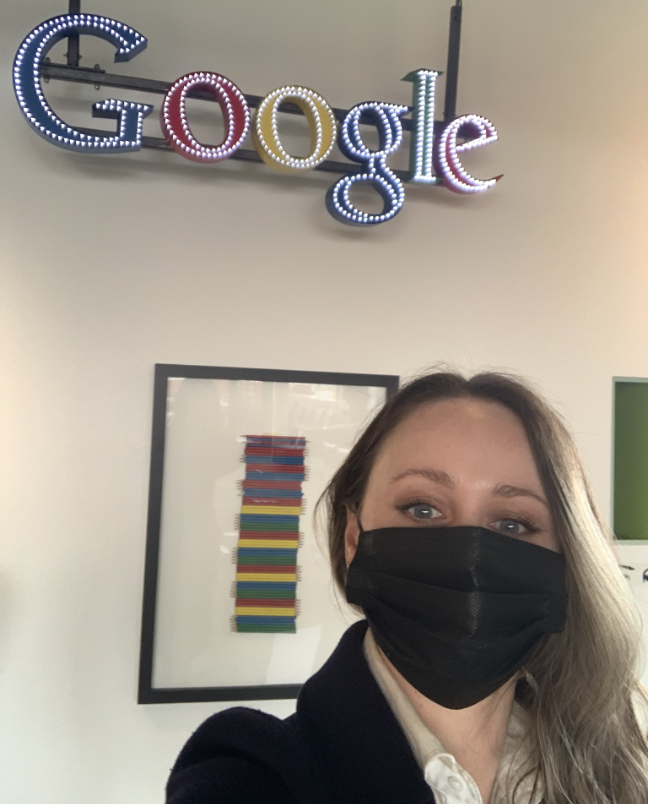 Sarah’s first day at the Google office after a year in the role.
Sarah’s first day at the Google office after a year in the role.
Crispin: Sarah, you’ve worked at various large and small companies, from Kantar to Truth and now Google. What have you learned about working at large companies versus small and clients versus agencies? What are your top tips for transitioning?
SA: My career has certainly taken a few interesting turns, and I’ve been fortunate to experience working both the agency and client sides. Kantar was a fantastic place to lay the foundations of a career in insights. I appreciated the structure, the training, and the focus on people development. I was lucky to find myself working in FMCG and Innovation - I got such a thrill out of helping brands identify new opportunities and bring the best of their new ideas to market. I loved going into a supermarket and seeing a new line extension, or popping to a bar and seeing a new cider on draft - it felt like I was making a difference, and I loved the creativity of invention (new products) and the rigor of addressing a genuine consumer need (only recommend to launch if commercially viable because enough people like it and repeat purchase).
“The nice thing about starting at somewhere like Kantar is that the insights industry is a small place - I feel like I can go to virtually any industry event and I will recognise people from those days. It gave me a network. It’s like a big community even though people have gone on to do other things. It’s also always been lovely that people who were far more senior in the business at the time, always had time for me back then, and often still recognise me a decade on! My advice would be, to be kind to and invest in the juniors today, they’re leaders of tomorrow. And to those earlier in your career - try to mix and mingle across the business. Be curious. Be friendly. Be helpful. You will in all likelihood see these people again - make a good impression.
“Truth was much smaller, scrappier, and with a strong orientation towards cultural insight. I went there because I wanted to expand my experience, and fast. I wanted to work across different categories, on projects other than innovation, dabble with other methodologies, and manage projects from start to finish. It was a small team of about .30 people, but it really punched above its weight in terms of clients - I got to work in Finance, Beauty, Pharmaceutical, FMCG, Tech, and Charity businesses - I’m running through the brand names in my mind and they were big clients for an agency that size, with really interesting briefs. The diversity of work was really an opportunity to grow. It was - frankly - challenging at times, and a big change in responsibility and culture - but you can’t beat a stint in a smaller agency for breadth of experience. If you’ve already got some experience up your sleeve and you want to push yourself - or pivot the kinds of research you’re working on - I’d recommend a stint in a smaller agency. Find one with smart people and a great client roster, and prepare to roll up your sleeves.
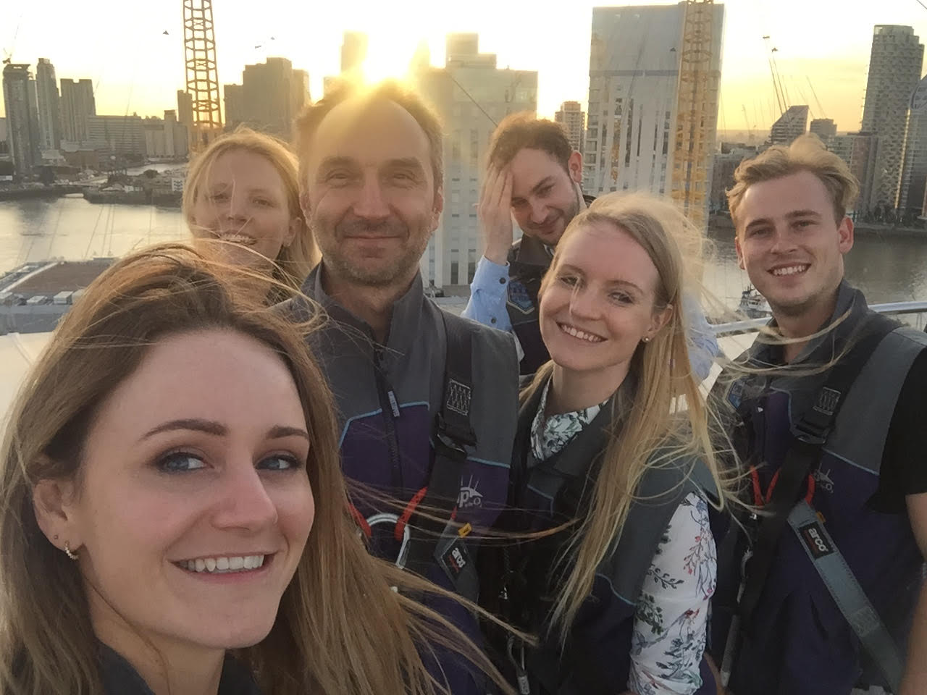 Sarah and her TNS team
Sarah and her TNS team
“Of course Google is a different prospect entirely. Transitioning to a “client-side” role is definitely a change. You become more accountable to a range of stakeholders and spend more of your time trying to manage expectations and land the right work, at the right time, with the right people. I’d say working out who’s who is half the battle in a big company! You certainly go to a lot more meetings. And, if you love doing the research, well… you have to learn where the appropriate line is on leaning in with your partner agencies to be helpful, versus giving them the breathing room to get on with the work without too much interruption! That was hard for me to give up at first, having been on the agency side doing the work myself, but finding the right balance gets easier. I find the rhythm of the year is very different too - there are still peaks and troughs in workload - but these are more seasonal playing out over an annual cadence - vs. the sometimes daily ups and downs of agency life depending on how many briefs land in your inbox and what fieldwork you're running.
“Overall, I count myself very fortunate to work for a company that is insight driven. I’ve never felt that it’s an uphill battle on that front, insights are important at Google, they play a key strategic role across teams, and people internally want to hear from our consumers and customers… I mean our mission in marketing is: “to know the user, know the magic, and connect the two”, and the number one principle on our ‘‘Ten things we know to be true’ is “focus on the user and all else will follow”. I’ve always found the insights needed at Google and the kinds of briefs my team is working on is fascinating. I really think it’s an amazing company doing big things, and to play even a small part in the mission still really motivates and excites me. If you’re thinking of heading client side I’d say shoot for a sector you are genuinely interested in, and a business where insights are really valued.”
Crispin: What role has luck played in landing and leading in these roles and how important is maintaining a sense of humour?
SA: “While luck may not be fully in our control, I do believe you can set yourself up to experience more luck. I think it’s about actively putting yourself in the path of opportunity; by saying yes, showing up, and trying your best when given a chance. Having a sense of humour and viewing mistakes as learning opportunities helps too.
“When I joined Kantar, it was for a quantitative role, and I could barely open Excel at the time. I'd studied arts subjects (Fine Art, then Anthropology) and came with a passion for understanding people, a genuine interest in business, and a promise to "learn fast," but with very little hands-on experience with data. I am still surprised and grateful they took a chance on me. Luckily for me, my colleagues were incredibly patient and supportive, and data analysis is a skill I’ve learnt and has been a crucial part of my work ever since. I think getting that role was a mixture of luck (the right job application, at the right time), of being surrounded by a supportive team, of being honest about my skill gaps, and then working hard to learn once I got a foot in the door. In this respect paying it forward, by assuming good intent, being patient, and encouraging others - is a really important aspect of how I approach my work.
“I also think serendipity plays a part. I’m not sure how many people grow up aspiring to work in market research - but over a decade into this path - it makes perfect sense I’d find myself in this role. Not just because of the post-rationalisation we each like to do - but because it does align with so many of my interests and skills. I just didn’t realise how much when I first had a stab at applying to Kantar.
“From there, I’d hoped to work client side one day and greatly admired the Technology sector. So perhaps I was lucky when a brief from Google landed at Truth one day! I quickly hand raised to work on the account and realised what an amazing company it was to work with. I loved the research briefs, the questions they asked, and thought the team were brilliant. I let people know I would be interested in a role if one came up, and luckily enough, one did. It was a lengthy recruitment process, but I made it through. On one hand - starting a new role at a company renowned for its amazing offices at the beginning of a global pandemic and work from home order was rather unlucky… but, experiencing the developments around AI from inside one of the companies driving so much innovation in this space – well, the timing on that feels incredibly lucky.”
Crispin: You’ve also worked in communications and brand strategy - how are these skills useful in your current role?
SA: “Great question, and honestly, I’m perhaps not leveraging those experiences as much as I should! Of course, communication is really critical in insights. If you can’t communicate your findings impactfully, the research is never going to have the influence it could. The trick is how you communicate, to who, and when, to achieve that impact. In my current role I work with a range of stakeholders - both internal and external - on the ground in the UK and spread across the world - all with varying degrees of appetite for, and familiarity with, insights. Different levels of seniority too. So there’s a lot going on! That’s where the power of observation, diplomacy, and empathy become really crucial aspects of communication. You need to read the room, the relationships, connect the dots, make an informed judgment (ideally well ahead of being in the room delivering any insights) about what is important for this group of people to know, and how you can best position it to resonate. Essentially - it’s about knowing your audience - and within reason, tailoring accordingly. I am not suggesting you incessantly people-please and tailor everything for everyone - nobody has time for that - but you can be choiceful about how to communicate. Some people want the details, some people want the high-level takeaways - it's strategic to consider those things ahead of communicating (be that email or in a meeting). I try to listen to those around me more than I speak (not too hard as an introvert) and put myself in the other persons’ shoes (make them feel heard and like the communication exchange is a good use of their time).
“Three final considerations here:
● The medium is the message: know when to send a quick ping to get an informal or urgent message across, vs an email, vs a video call, vs face to face
● Quality vs Quantity: a lot of my communication is about “avoiding surprises” so I try to overcommunicate what’s going on often, but keep it light touch so people can ask more if they want to without being bogged down
● TL;DR - too long didn’t read: once an email is over c. 300 words I’ll add a tl;dr at the top of the email that summarises the remainder of the message in a single sentence. If people only have time for that sentence - they have the gist. If it has a relevant hook, they’ll read on.”
Crispin: Who are the key stakeholders in your current role and how do you juggle multiple interests?
SA: “To clarify, as there are many insights teams at Google, my team's mission is to produce industry-leading research that shapes marketing strategies for Google’s Ad Marketing team, and for our customers. We focus on thought leadership with a long shelf life that evolves the conversation around what people are searching for, how marketing works, and disruptions to prepare for. Our role as an insights team is to provide the research-based consumer, business, 1P, and effectiveness insights that other teams cannot. For example: Three Grand Challenges, Decoding Decisions, Mirrors & Windows. We’re a team of 12 led by the inimitable Jonny Protheroe.
“Sometimes it feels like everyone is my stakeholder! But I exaggerate, and am grateful to work with such a range of smart and interesting people. I’m part of the EMEA Ads Marketing department, which means I partner predominantly with a range of teams related to the Ads business. My primary stakeholders day to day include: my colleagues in EMEA Marketing Insights, EMEA Marketing more broadly, Comms (PR and Think with Google), Global and APAC Ads Insights teams, GTM, and of course Local Marketing and Sales teams. In terms of juggling multiple interests - I’m fortunate that our teams are all highly collaborative and work well together. We communicate frequently and rely on each other in a way that fuels a mutually beneficial flywheel.
“For instance, our research is better and more relevant for the business if we’re building on direct feedback from Sales, and our work is more aligned and consistent if we keep connected to the Global insights teams. There’s an incentive on all sides to keep in touch, even if it’s challenging to keep momentum and alignment!
One of the main ways my team juggles multiple interests is having a “plan on a page”, and a clear RACI for every project. From there, things get easier. The plan on a page articulates - you guessed it, on a single page - what the project is about. Who is doing it, why we’re doing it, when we’re doing it. The RACI (Responsible, Accountable, Consulted, Informed) clearly names upfront who’s who in the project and encourages you to proactively communicate early to everyone who will play a role in the projects’ success. It also clarifies who gets to know about what’s going on for their visibility (Informed) vs who gets a real say in making changes to the direction (Consulted) - which is critical when you’re running projects that will touch multiple departments and stakeholders. So for example, if I am responsible (I manage the work day to day), then in all likelihood my manager or VP will be accountable (if something goes terribly wrong - this specifically is who I’m escalating to). Consulted are all the people and departments I expect to have a point of view and the opportunity to contribute and challenge it, and then Informed - we’d love to keep you in the loop as a courtesy and so you are not surprised by anything later, but realistically we don’t expect your feedback and would be limited in accommodating it (if you think you should be in the consulted group, let me know and I'll happily reconsider). In combination, these are really effective and it’s good discipline at the start of a project.”
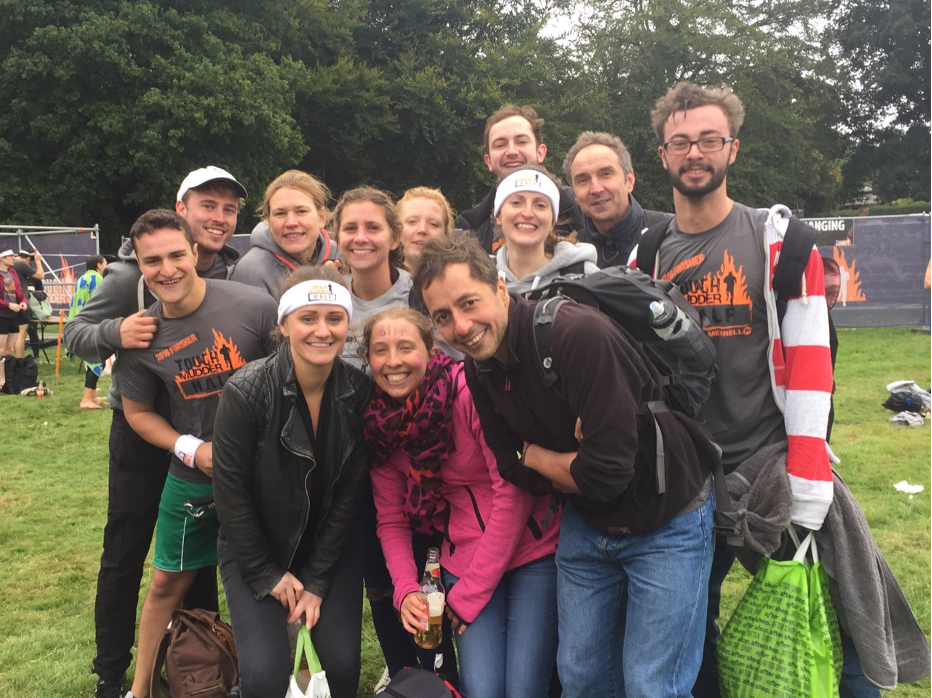 Sarah organising a Tough Mudder for TNS (now Kantar)
Sarah organising a Tough Mudder for TNS (now Kantar)
Crispin: Is using insights to drive commercial decisions increasing or decreasing in technology companies, and why do you think that is happening?
SA: “In my opinion, technology companies are, by their very nature, data-oriented. But I also appreciate that insights are not just about the data. “Data” can help you optimise something, but it won’t tell you if you’d be better off doing something entirely different. So it’s important to be able to interpret in context and give the “why” behind the “what”. This is captured really nicely in our mission in Marketing at Google, to: “know the user, know the magic, and connect the two.”
“While I can’t speak for all technology companies, I believe that insights are fundamentally important and play a key role in important decision-making. I can say with full confidence that in the time I’ve been at Google I have seen us increasingly using insights to inform our decision making in EMEA Ads Marketing. The direction of travel has definitely been towards deeper customer understanding and using that insight to inform more of the strategy. I think there are a number of reasons why, some strategic, some a bit more serendipitous. On the one hand - the competitive landscape has intensified, and with that, I think people are increasingly seeking to make decisions grounded in evidence that they can point back to. Some of it is also team-related. Over recent years I can think of a couple of people who have joined the business who have helped change mindsets. One person joined the team from another region with a specialism in running leading-edge customer insight, and another was a senior hire who sees insights as a strategic priority and really puts insights at the heart of planning. This shift in context, skillset, and leadership - has increased the role of insights in commercial decision-making.
“Of course the broader business is incredibly technologically driven - fuelled by brilliant engineers and scientists doing fascinating work. I attended a presentation recently where John Jumper (the youngest Nobel Prize winner), James Manyika (SVP of Research, Technology & Society), and Biren Jain (research scientist mapping the human brain) spoke about their work. What I always find inspiring and motivating in these conversations - other than the sheer awe at being in their presence and hearing firsthand about these things - is that the cutting-edge research is always anchored back to the good it can do for people. It’s such a strong orientation in the business - back to the user and helpfulness - I think insights will continue to be important and only become more so.”
Crispin: What data types are used to develop insights for Google’s brands and products?
SA: “This is a little tricky for me to answer precisely because my work focuses on the Ads business, our customers, and Marketing (as opposed to Product) insights. There is, of course, a huge range of research, teams, and data used across the business, and on occasion, insights from our work have been taken to product teams to influence decisions over there where appropriate (just none of mine unfortunately).
“My team specifically is focused on building insights for our Ads customers. Google’s millions of advertising customers have high expectations when it comes to insights. Our customers expect insights about what’s going on in the world right now. Given Google’s prominence in the media mix they expect us to have a strong basis of evidence and point of view on marketing effectiveness. And given our position at the forefront of technological change, they expect us to help them to prepare and adapt for disruptions, with clear insights and recommendations around topics such as AI, Privacy, and Digital Transformation.
“To support these expectations we conduct a range of studies and employ various datasets. Whilst our proprietary Search and YouTube datasets are incredibly valuable resources, the vast majority of our work combines clues from behavioural data in harmony with timely primary research - it’s the combination that generates our best work. Researching topics such as AI, Privacy, Online Video and Shopping behaviour all require sophisticated methodologies and experiments to help unpick the real underlying drivers of behaviours and attitudes. We flex our approach depending on the question, routinely incorporating more traditional methods (e.g. cultural analysis, conjoint, A/B testing), but also more ‘theatrical approaches’ (e.g. inventing a suite of 31 fictional brands, complete with invented ads, websites and actors playing customer service representatives, to unpick purchase drivers).”
Crispin: Has the profile of Google’s customers evolved over the last decade, and what factors do you believe are driving these changes?
SA: “I’m going to reframe this to our Ads customers, as that’s where my expertise lies. There have been shifts in the last decade. The shift to mobile, increase in programmatic advertising, the rise of streaming platforms, advent of new social media platforms, the disruption caused by covid in general, and most recently, the emergence of AI - all have had and are having notable impacts. Those are, largely, technological changes.
“But a big part of what we do as a research function is focused on the fundamentals of human behaviour, using methods like behavioural economics to understand what’s enduring about consumer behaviour. I’ll cite two quotations that always intrigue me. Jeff Bezos who said, “I very frequently get the question: 'What's going to change in the next 10 years?'... I almost never get the question: 'What's not going to change in the next 10 years?'" And then - I think Bill Bernbach is the right attribution for - “It took millions of years for man's instincts to develop. It will take millions more for them to even vary. It is fashionable to talk about changing man. A communicator must be concerned with an unchanging man.” I think a lot of really interesting work explores the intersections between these things; fundamental human needs that remain the same, but are expressed in new and different ways due to technological advancement.
“So what I try to focus on is not just what technology marketers should be aware of (there are stories in the media about that all the time) but how marketers can best react to and implement changes in a way that actually resonates with what people want and need. When I look at things like the Starline project (a technology that allows you to see another person life size in three dimensions even if they’re countries apart) or tried on the Apple Vision Pro - these technologies and their successful adoption will depend on (not just price point, availability, privacy etc.) but also whether they’re ultimately rooted in a very familiar desire to connect with the people you care about. I really hope I get to Starline with my grandparents - they’re amazed when I call them from business trips to New York and they can’t believe how crisp the line is from America… just wait until they learn I could pop up in their living room from another country.”
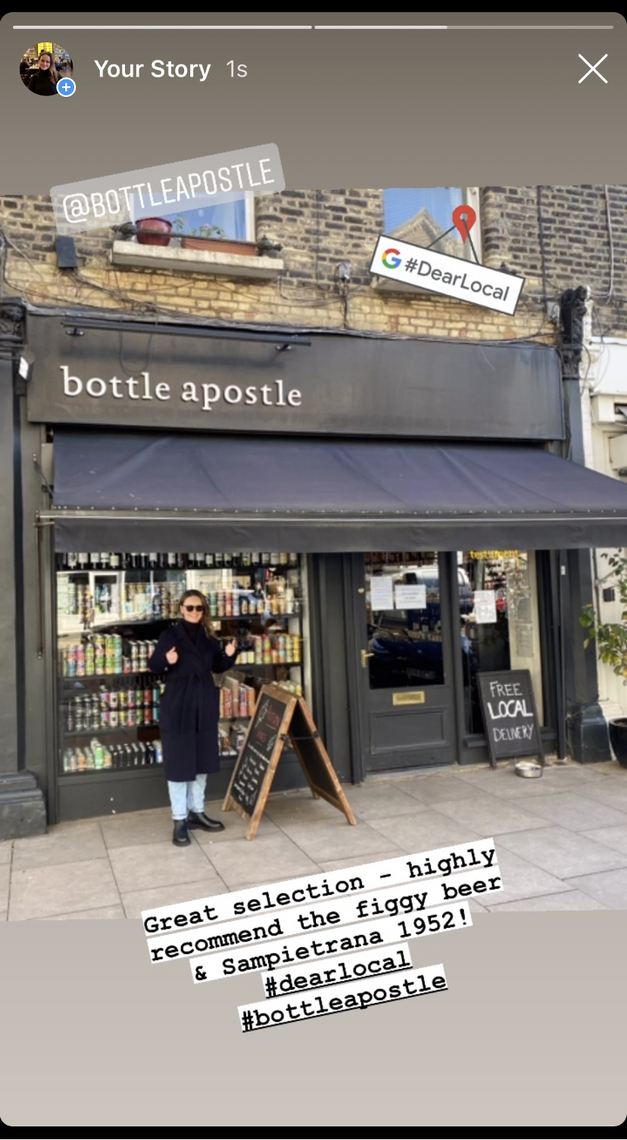 Sarah supporting local businesses with Google Maps #DearLocal campaign
Sarah supporting local businesses with Google Maps #DearLocal campaign
Crispin: Can you provide an example of a key insight that fundamentally changed a product decision or marketing strategy at Google?
SA: “The one that initially sprang to mind I can’t share because it’s informing our team planning now (I will say, it’s publicly available and likely widely known - but we hadn’t really considered it in a B2B context). One I remember learning about when I first joined relates to Google Maps. Initially, Google Maps primarily focused on navigation and providing directions, but a large volume of searches on Maps were related to finding local businesses, their operating hours, reviews, and contact information. People weren't just using Maps to get somewhere; they were using it to discover and decide where to go. From a product perspective, Google my Business (now Google Business Profile) was developed which allowed businesses to claim and manage their online presence on Google, including their information on Maps. From a marketing perspective, the business shifted marketing campaigns to showcase Maps as a tool for local exploration and discovery, not just navigation. I remember during the COVID lockdown there was a resurgence of campaigns around this, and everyone in the team went out individually to take photographs at local businesses and leave reviews to help support small businesses in our local area.”
HOT TOPIC: Market evolution - how do you see the insights space evolving?
SA: “I think we’ll move even further along the AI ‘hype’ to ‘how’ journey as more people get hands-on with the technology. I believe we’re just scratching the surface of the ways AI can beneficially augment our work. In my view, you only need to: see some great examples, experience a forcing function or two that get you really playing around with the technology, and a bit of help getting the basics right - and it’s a game changer. I think we’ll see further improvements around translation, sentiment analysis, identifying patterns in unstructured data - and more. I’d like to see AI enhance the research experience - imagine more conversational-style surveys that garner more thoughtful and honest answers, or real-time transcription and translation services that make participation more accessible and inclusive across the globe. I think project cycles will speed up - I suspect the days of spending weeks on literature reviews are behind us. I think dashboards will get more user-friendly, and it will become easier to run queries in databases in everyday language without needing to know programming languages. It’s going to be interesting, and I can see both opportunities and challenges ahead! I hope 2025 will bring exciting and ethical experimentation, and perhaps a clearer direction of travel on what this all means for our industry.”
TOP TIP - What's your top tip to be a leader & innovator in our profession?
SA: “My top tip is to stay curious, embrace an experimentation mindset, and never lose sight of the human element behind the data. Wait... that's three.”
Crispin: Sarah, thank you for providing such a fascinating perspective into the role insights play for a technology innovator like Google. The ever-expanding role insights is creating exciting opportunities across an array of industries, so getting your front-row perspective is fantastic. It’s fascinating to see how advancing innovations, like AI, are changing and challenging the world of market research, so the coming years should represent exciting times for all of us in the profession.
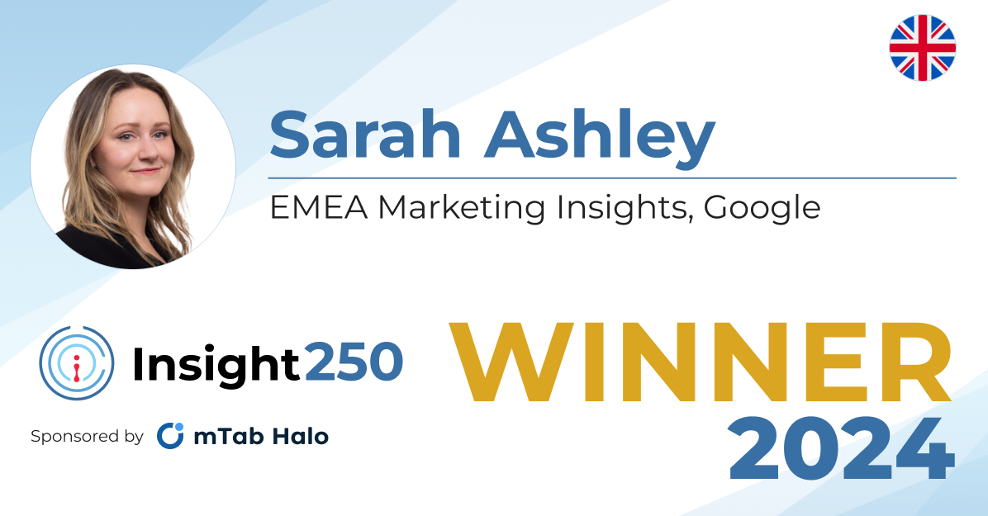
Crispin Beale
Chairman at QuMind, CEO at Insight250, Senior Strategic Advisor at mTab, CEO at IDXCrispin Beale is a marketing, data and customer experience expert. Crispin spent over a decade on the Executive Management Board of Chime Communications as Group CEO of leading brands such as Opinion Leader, Brand Democracy, Facts International and Watermelon. Prior to this Crispin held senior marketing and insight roles at BT, Royal Mail Group and Dixons. Crispin originally qualified as a chartered accountant and moved into management consultancy with Coopers & Lybrand (PwC). Crispin has been a Board Director (and Chairman) of the MRS for nearly 20 years and UK ESOMAR Representative for c15 years. As well as being CEO of Insight250, Crispin is currently Worldwide CEO of Digital Communications Solution Agency, IDX. Crispin is also the Senior Strategic Advisor at mTab and the Chairman of QuMind and spent 4 years as Group President of Behaviorally where he was responsibile for the client & commercial teams globally. Crispin is a passionate advocate for blending human intelligence and technology to deliver innovation and leadership across organisations.
Article series
Insight250
- The importance of business sense in research
- The role of humour in effective leadership
- The importance of ethics
- The importance of disruption in innovation and leadership
- The importance of Disruption in Innovation and Leadership Part 2
- The importance of Diversity & Inclusion
- The impact of colour
- Communicating insight with impact
- Insights on leadership, culture and polling
- The evolution of electric vehicles
- 2022 Top tips (part 1)
- 2022 Top tips (part 2)
- Maximising the potential of data
- The importance of flexible working
- Winners
- The importance of advanced analytics
- Judges for the 2022 Insight250 Awards announced
- The evolution from social listening to digital intelligence
- The Judges' Perspective
- The judge's perspective - part 2
- Insight Climate Collective
- Insights technology
- Understanding employee ownership
- Global insight perspectives
- Top Tips from our Leaders and Innovators
- The Evolution of Insights in the Food & Beverage Market
- The Evolution of Insights in CPG
- Neural Mechanisms Behind Consumer Decision-Making
- Celebrating and Elevating the Insights Industry
- The State of the Insights Industry
- Opportunities, challenges and threats that AI presents
- 2024 Insight250 Winners Announcement
- Connecting Brands and Consumers Through Insights
- The Importance of Human Insight and Attention
- The Elevating Role of Insights with Technology Innovation
- Haleon’s Insight Expert on Consumer Healthcare
- Insight from the Insight250: How AI is Impacting Qualitative Research
- How AI Tech is Doing the ‘Heavy Lifting’ for Insights
- Reviewing the top tips for 2025
- Google's Sarah Ashley on AI and revolutionising insights - Insights from the Insight250
- Beyond BI: The Future of Decision Intelligence for Insight Professionals
- The Advancement & Impact of Insights - An Insight250 Winners Series perspective with David Smith
- International Jury for the 2025 Insight250 Awards Announced
- Newly elected President, Anne-Sophie, on Revolutionizing the Impact of Insights
- Haleon's Litthya Baez on Enhancing Healthcare with Insights - Insight250 Winners Series
- Understanding the Insights of Consumer Decisions
- Moving Beyond Dashboards to Deliver Decisions with AI
- How AI is Transforming Insights
- How AI is Transforming Insights
- Five Years of Insight250: Elevating the Insight Industry


